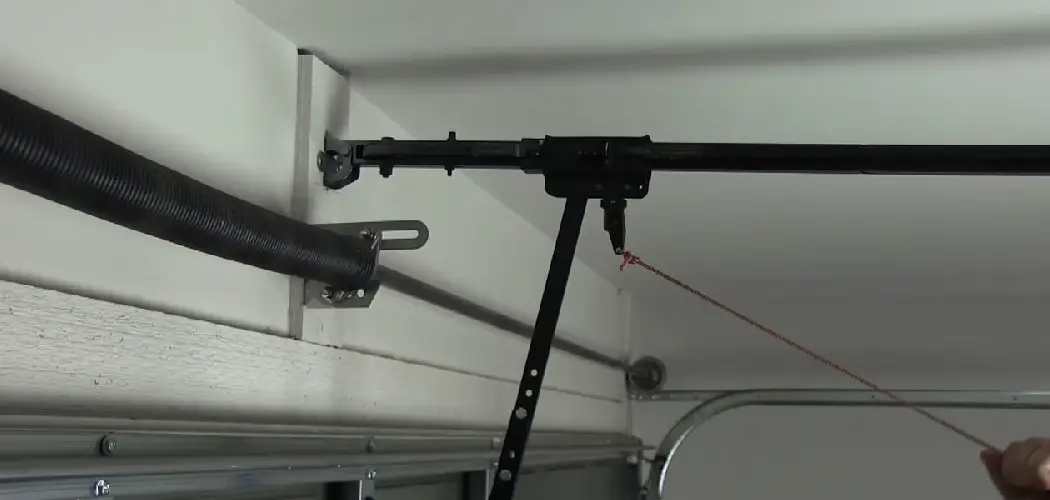Are you tired of having to physically disconnect your garage door opener each time you want it to stop responding? If so, this blog post is for you! Here we will provide an in-depth guide on how to properly and safely disconnect your garage door opener—no matter the brand, type, or model.
By following along with our step-by-step instructions and going over some additional tips as well, you can quickly and easily learn how to disconnect garage door opener with minimal effort. So prepare yourself for all the knowledge that awaits and let’s dive in!
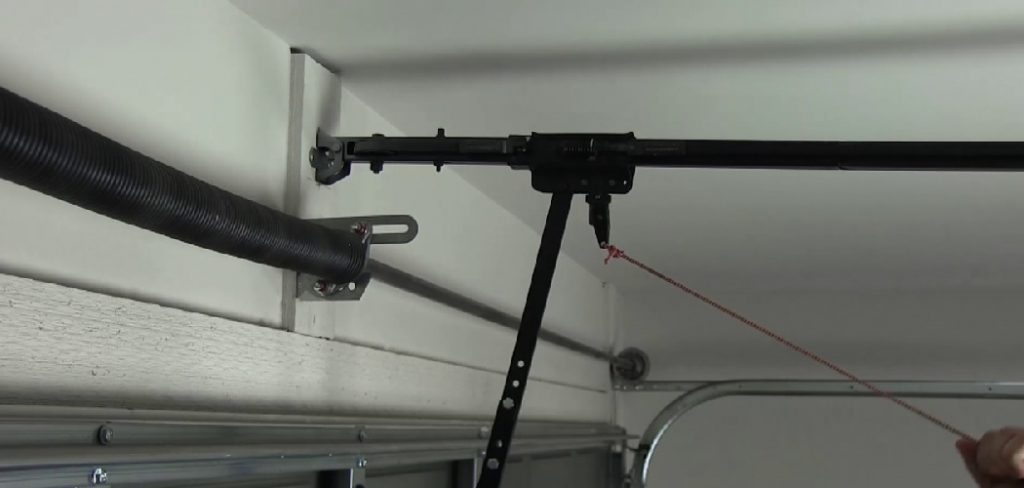
If you’re like many homeowners, you use a garage door opener to make entering and exiting your home simpler. However, if something goes wrong with the opener or if it’s not functioning as it should, disconnecting the motor can help restore proper operation.
In this blog post, we’ll cover exactly how to properly disconnect a garage door opener so that you can get back into your home quickly and safely. Read on to learn more about what steps to take!
Why May You Want to Disconnect the Garage Door Opener?
1. To Replace an Existing Opener With a New One
One of the main reasons why you may want to disconnect your garage door opener is to replace an existing unit with a new one. This can be done if the old unit has worn out or if you simply want to upgrade for improved security and convenience.
2. To Remove Unused Openers
If you’ve recently moved into a home that already had a garage door opener installed, you may want to disconnect any unused openers that are still connected. This will ensure no unauthorized access to your home and keep your property secure.
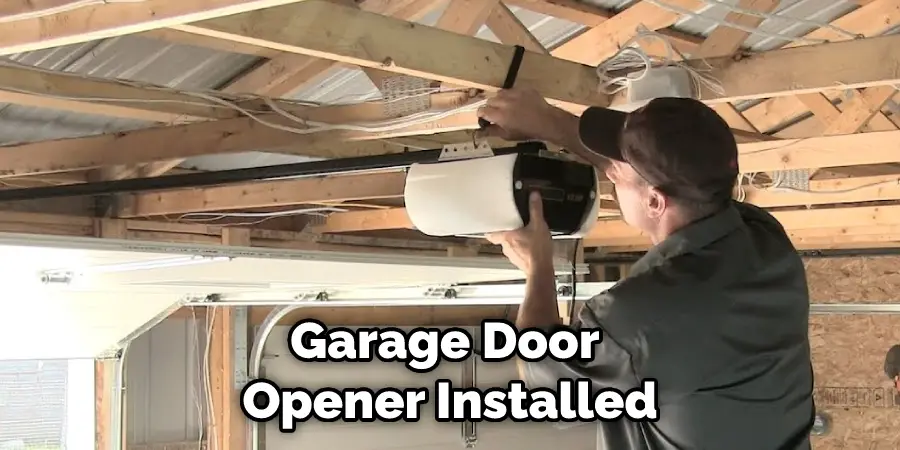
3. To Troubleshoot an Existing Opener
Disconnecting the garage door opener can also be useful if you’re experiencing problems with it. By disconnecting and then reconnecting the opener, you can reset it, which may solve any issues you’re having with it.
Now that you know why you may want to disconnect your garage door opener, let’s look at how the process actually works.
How to Disconnect Garage Door Opener in 5 Easy Steps
Step 1: Locate the Emergency Release Cord
The very first step is to locate the emergency release cord. This cord is usually a red handle that can be found hanging down from the garage door opener’s motor unit. Also make sure you have a step stool, ladder or something to reach the cord if it’s too high.
Step 2: Pull the Emergency Release Cord
Next, carefully pull down on the emergency release cord until it locks in place. This will cause the garage door to be disconnected from the opener and free to move up or down manually. Make sure that the garage door is securely locked in place before continuing.
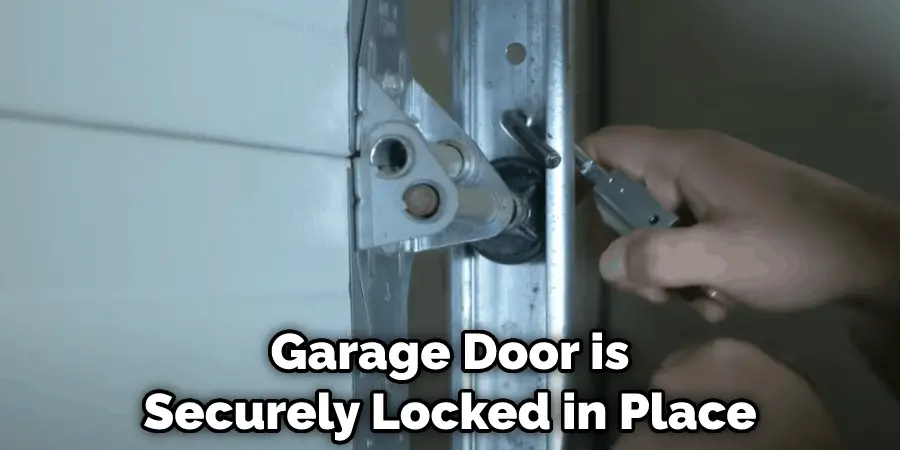
Step 3: Unplug the Garage Door Opener
Once the emergency release cord has been pulled down and you’ve ensured that it is secure, unplug the garage door opener from its power source. It’s usually a plug connected to an outlet or power strip.
Step 4: Remove the Motors from the Track
Next, remove the garage door opener’s motors from the track of your garage door. To do this, simply unscrew and detach them from the rail on each side. Make sure they are completely removed before proceeding to step five.
Step 5: Close and Secure the Garage Door
Finally, close and secure the garage door. You can do this by simply pulling down the garage door until it is completely closed. Then make sure to lock or latch the door from either inside or outside of your home.
With these five simple steps, you should now know how to disconnect a garage door opener from your garage door. Make sure to carefully follow all instructions and safety precautions when disconnecting your opener to ensure the safety of you and those around you.
Good luck!
Some Additional Tips to Disconnect Garage Door Opener
1. Do Not Force Disconnection
When disconnecting your garage door opener, do not use force. This can damage the parts or cause them to malfunction when re-connected. Also, make sure that you only pull from the handle or ring, and not any other parts of the opener.
2. Unplug the Opener
If you are using a wired garage door opener, unplug it from its power source. This will ensure that it is completely disconnected. A safe distance to plug in or unplug an opener is at least six feet away from the door.
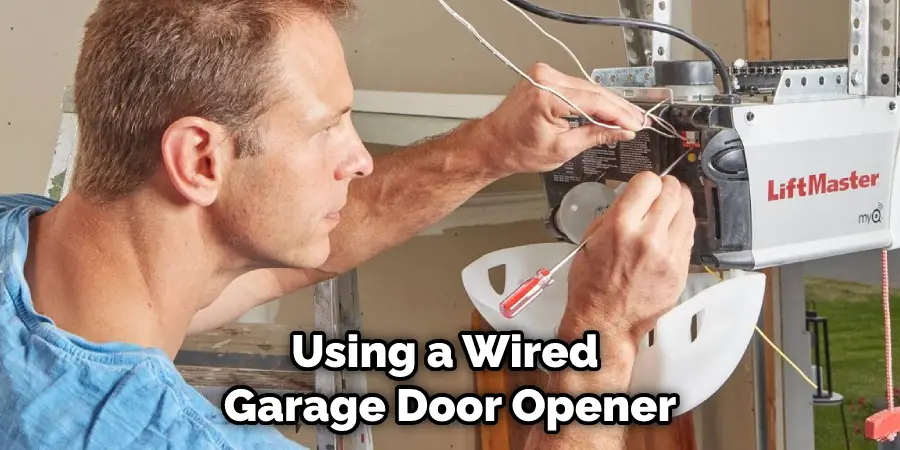
3. Remove and Disconnect all Wires
If you are using a wireless garage door opener, remove the batteries and disconnect any wires that may be connected to the opener’s motor or other parts. This will ensure that it is completely disconnected from power sources. Additionally, do not forget to remove the battery cover before removing the batteries.
4. Disconnect Any Remotes or Sensors
If you are using a remote or sensor with your garage door opener, make sure to disconnect and unplug any wires that may be connected to them as well. This includes wires from keypads, motion sensors, or other accessories.
5. Check All Connections
Once all of the connections have been removed and disconnected, double-check them to make sure they are properly secured and no wires are left exposed. This will ensure a safe and secure disconnection of your garage door opener.
6. Check for Wiring Problems
Before attempting to disconnect the opener, check for any wiring problems that could be causing it to malfunction in the first place. If necessary, seek professional help and advice before disconnecting or reconnecting the opener.
7. Store Parts Safely and Securely
When the garage door opener is disconnected, make sure to store all parts safely and securely, in a location where they won’t be exposed to moisture or extreme temperatures. This will ensure that they are kept in good condition.
8. Test the Disconnection
Once the opener has been disconnected, test it out to make sure that it is no longer connected and that the door can be opened or closed manually. If any issues persist, seek professional help before reconnecting the opener.
9. Reconnect the Opener with Care
Finally, if you decide that you need to reconnect the garage door opener, be sure to do so carefully and follow all instructions and safety precautions. This will ensure that the opener is re-connected safely and securely.
Following these tips carefully will help you safely and securely disconnect your garage door opener. Be sure to also check your local codes and ordinances for any additional information related to disconnecting a garage door opener. With this knowledge in hand, you can properly and safely disconnect or reconnect your garage door opener whenever necessary.
Frequently Asked Questions
What Precautions Should I Take Before Disconnecting My Garage Door Opener?
Before attempting to disconnect your garage door opener, always make sure the power is off. Additionally, you should ensure that the garage door is securely closed and locked.
Doing these two precautions will help prevent any potential accidents or injuries from occurring due to malfunctioning equipment. Finally, it’s a good idea to have someone else nearby who can help if needed.
What Is the Easiest Way to Disconnect My Garage Door Opener?
The easiest way to disconnect your garage door opener is from the power source. Simply unplug it from the outlet and you should be good to go. If there is no accessible power source or you cannot locate it, then you may need to disconnect the opener from its manual override switch.
To do this, simply flip the switch off. Finally, don’t forget to turn off any automatic openers and lights that are associated with the garage door opener before attempting to disconnect it. Doing so will help prevent possible accidents or injuries due to malfunctioning equipment.
What Are the Benefits of Disconnecting My Garage Door Opener?
Disconnecting your garage door opener is beneficial for several reasons. First and foremost, it helps to prevent any potential accidents or injuries from occurring due to malfunctioning equipment. Additionally, disconnecting your garage door opener can help you save on electricity bills as it eliminates any unnecessary energy consumption.
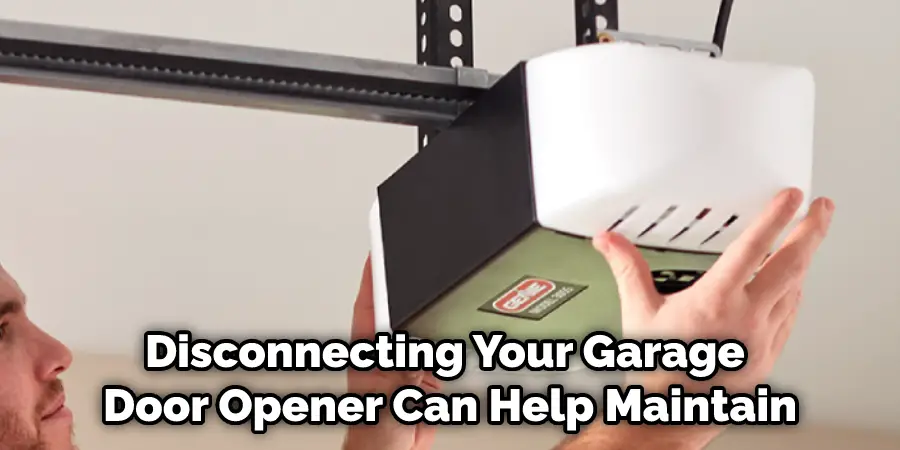
Finally, disconnecting your garage door opener can help maintain the system’s life expectancy as it prevents any potential build-up of dirt and dust within its components.
What Should I Do After Disconnecting My Garage Door Opener?
After you have disconnected your garage door opener, there are several things you can do to ensure its safe and effective operation. First, check the springs and other components of your opener system for any signs of wear or damage. If there is any visible damage, it’s best to get it repaired before attempting to reconnect the garage door opener.
Additionally, make sure all wires are securely connected and properly insulated. Finally, test the system by manually operating it in order to ensure that it is functioning properly.
Are There Any Other Tips for Disconnecting My Garage Door Opener?
Yes! Before attempting to disconnect your garage door opener, make sure you have all of the necessary tools handy and read through all of the manufacturer’s instructions so you are well aware of how to safely and effectively disconnect the opener.
Additionally, if you are not sure how to properly disconnect your garage door opener, it’s always a good idea to contact an experienced professional for assistance. This will ensure that the job is done properly and safely.
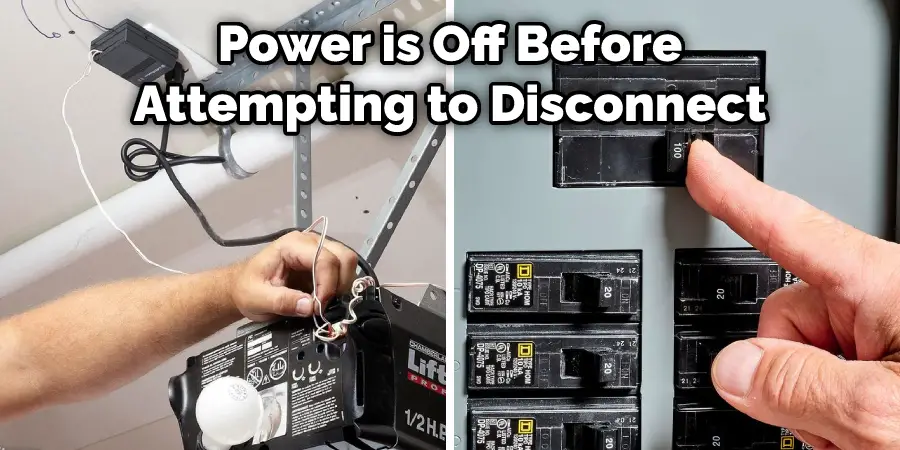
Are There Any Safety Precautions I Should Take When Disconnecting My Garage Door Opener?
Yes. Always make sure the power is off before attempting to disconnect your garage door opener and ensure that the door is securely closed and locked. Additionally, have someone nearby who can help if needed.
Finally, do not forget to turn off any automatic openers or lights associated with the garage door opener before you attempt to disconnect it. Doing this will help prevent any potential accidents or injuries from occurring due to malfunctioning equipment.
How Much Does It Cost to Disconnect My Garage Door Opener?
The cost of disconnecting your garage door opener can vary depending on the complexity of the job. Generally speaking, if you are able to do it yourself then the cost will be minimal since you only need to purchase a few basic tools.
However, if you require professional assistance then the cost will be higher. It’s best to contact a licensed professional for an accurate quote on the cost of disconnecting your garage door opener.
Can I Disconnect My Garage Door Opener From a Remote Control?
Yes, you can disconnect your garage door opener from a remote control. To do this, simply locate the power source and shut it off. After doing so, remove the batteries from the remote control as well as any connection cables or wires. Finally, make sure to turn off any automatic openers or lights associated with the garage door opener before you attempt to disconnect it.
By following these simple steps, you should be able to safely and effectively disconnect your garage door opener, helping to prevent any potential accidents or injuries from occurring due to malfunctioning equipment. Remember, if you are unsure how to perform this task always consult a licensed professional for assistance.
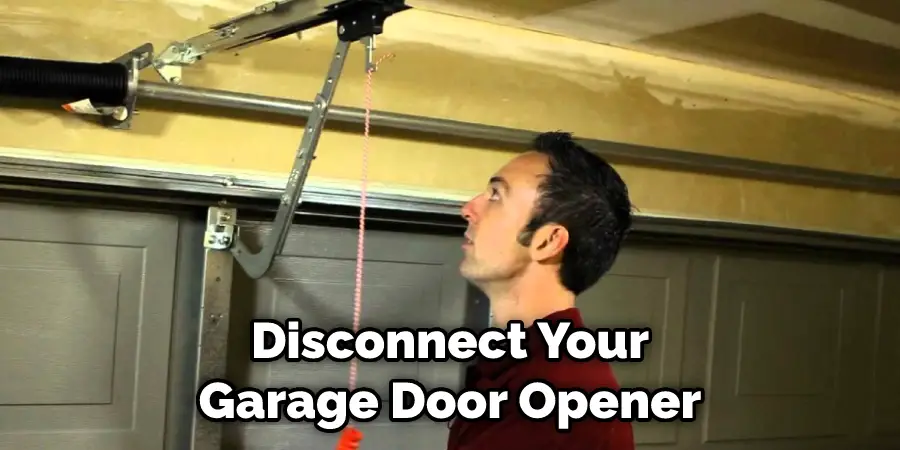
Conclusion
Now you know how to disconnect garage door opener! Disconnecting a garage door opener may seem like a daunting task, but with a few simple steps and the right tools, anyone can do it.
It is important to remember that safety should be your primary concern when disconnecting – you don’t want to risk injuring yourself or damaging anything in the process. Additionally, understanding each individual section of the garage door opener is crucial for successful disconnection.
Through proper research, patience and the correct materials, disconnecting a garage door opener will be no challenge at all. Taking the time to understand your garage door system from an expert can also help guarantee success upon completion. Disconnecting a garage door opener doesn’t have to feel overwhelming; by following these tips, a smooth and safe disconnection can be ensured!

